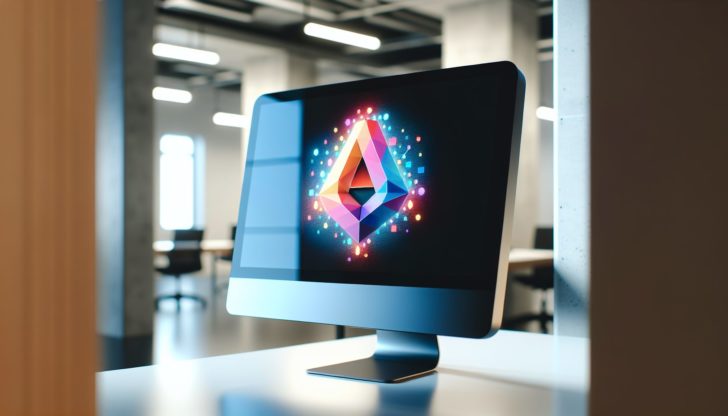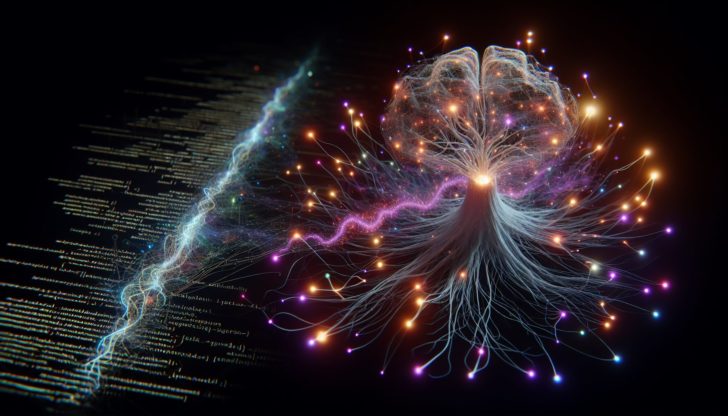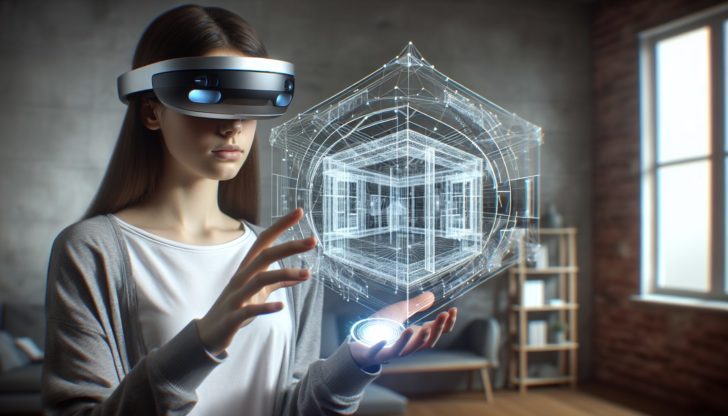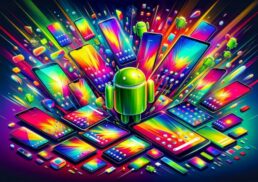Luma AI is transforming the way artists and designers create, enabling the conversion of text to 3D models with ease. This article examines the workings of Luma AI and its impact on digital art creation.
Table of Contents
Key Takeaways
Luma AI is a transformative visual AI technology that enables users to efficiently create lifelike 3D models and environments from simple text prompts using iPhones, incorporating Neural Radiance Fields (NeRF) and computer vision for realistic outcomes.
The integration of augmented reality (AR) and AI in Luma AI presents advanced real-time editing and interactive capabilities, allowing users to adjust and animate 3D creations within the platform, enhancing the digital art creation and immersive experience.
Luma AI has broad applications beyond personal creativity, including significant potential to revolutionize the design, artistic, and entertainment industries with features that streamline the visualization and creation processes of complex 3D environments and elements.
Understanding Luma AI: A Leap in Digital Creativity

Luma AI is a visual AI technology that transforms simple text prompts into lifelike 3D models. With the use of its Genie AI tool, users can effortlessly capture and produce 3D objects, landscapes, and scenes using their iPhones. By leveraging the power of artificial intelligence, Luma AI is not only changing the way we create art but also building multimodal AI that is set to transform a range of industries.
This transformative tool acts as a conduit between human imagination and reality, unfolding a plethora of possibilities in digital creativity. Whether you are a seasoned artist, a budding designer, or someone who enjoys dabbling in digital artistry, Luma AI is the key to a whole new world of creative exploration.
The Magic Behind Luma AI: How It Transforms Text to Art

The magic of Luma AI lies in its innovative use of Neural Radiance Fields (NeRF) and computer vision technology. Together, these technologies not only transform text into detailed 3D models and environments but also capture detailed elements like reflections and transparencies, surpassing traditional 3D scanning methods and providing more realistic outcomes.
Neural Radiance Fields Explained
Neural Radiance Fields, or NeRF, is a machine learning technique that generates 3D scenes from 2D images. It uses a neural network to depict a scene and is capable of producing new perspectives of intricate 3D scenes from incomplete sets of 2D images. It operates by undergoing training using a collection of images captured from various perspectives of a given scene. Within the neural network, each pixel in these images corresponds to a specific point in 3D space, thereby facilitating the generation of novel scenes from diverse viewpoints.
Within the Luma AI ecosystem, NeRF fulfills a pivotal role. This technique facilitates the creation of lifelike 3D scenes from sparse data, encapsulating the world in a more vibrant, three-dimensional form. This powerful tool allows for the creation of realistic digital models from 2D images on a mobile platform, even for single objects, enhancing the visual realism and depth of the models created.
Computer Vision and Its Role
Computer vision technology stands as a cornerstone in Luma AI’s text-to-art conversion process. This technology teaches computers to acquire and comprehend information from image and video data through the use of machine learning models. These models can be used for a variety of purposes such as object recognition, scene understanding, and image synthesis.
Within the Luma AI framework, computer vision aids in:
Analyzing and interpreting visual content, an essential step in crafting distinctive artistic works and delivering insightful observations
Automating tasks, improving the creative process, and delivering personalized user experiences
Propelling photos into the realm of 3D art and allowing the tool to generate reliable and precise 3D models for applications in diverse fields such as video games, virtual reality, simulations, and robotics testing
Contributing to building multimodal AI systems
This technology is key to enhancing various aspects of the creative process, has wide-ranging applications, and serves additional purposes, including offering valuable services.
Augmented Reality Meets AI: Enhanced Interaction with Luma AI

By integrating augmented reality (AR) and AI, Luma AI elevates the creative process to unprecedented heights. This powerful combination enables users to interact with their creations in real-time, making adjustments as needed, and immersing themselves in the project.
Real-Time Editing Capabilities
Luma AI distinguishes itself with its real-time editing capabilities. These capabilities encompass the import and rendering of photorealistic captures, the ability to capture realistic movements, and the creation of dynamic camera movements. These capabilities are further enhanced by the integration of AI and AR technologies, offering users a seamless and intuitive editing experience.
In addition to enabling the quick capture and adjustment of 3D objects and scenes, Luma AI’s real-time editing capabilities also offer notable time savings. This feature enhances workflow efficiency, allowing users to:
Focus more on creativity and less on time-consuming technical details
Benefit from advanced AI algorithms ensuring high-quality 3D capture with precise detailing, reflections, and accurate lighting
Have a seamless real-time editing experience
Bringing Projects to Life
Luma AI does more than just create 3D models; it infuses them with life. By utilizing visual AI in combination with augmented reality, Luma AI animates projects, offering capabilities such as:
Photo realism
Dynamic scaling
High performance
The capacity to produce professional flythroughs
Generate detailed 3D textured assets
This integration of AR brings a heightened level of interactivity to digital creations. Luma AI enables the creation of 360-degree worlds and offers augmented reality capabilities to interact with 3D models within real-world contexts, thereby enhancing the overall immersive experience.
From Imagination to Reality: Practical Uses of Luma AI

Though Luma AI is an empowering tool for any creative enthusiast, its practical applications reach well beyond the realm of personal use. It offers new ways for designers, artists, and the entertainment industry to create and visualize ideas, potentially revolutionizing these fields.
For Designers and Artists
Designers and artists can leverage Luma AI to quickly generate and modify lifelike 3D models. Whether for a design project or an artistic endeavor, Luma AI can aid in efficiently visualizing various design approaches and artistic concepts.
Furthermore, Luma AI offers artists and designers distinctive features including unparalleled photorealism, efficient 3D capture capabilities, and text-to-3D conversion, enabling the creation of distinctive and visually captivating images and models that can propel photos to new heights of creativity.
With Luma AI, artists and designers have a powerful tool at their fingertips that can help take their creations to the next level.
In the Realm of Entertainment
In the entertainment industry, Luma AI is set to make a big impact. It has significantly influenced the industry through its facilitation of:
Visual effects
Advanced 3D modeling
Object reconstruction
Photorealistic rendering
All of these are crucial for creating immersive virtual worlds and experiences.
Imagine a gaming experience that’s more realistic than ever before, or a virtual reality experience that truly transports you to another world. With Luma AI, these scenarios are not just possible, they’re becoming a reality. Developers can harness Luma AI to streamline the generation of virtual elements, fabricate lifelike 3D objects, and ultimately elevate the immersive experience.
Getting Started with Luma AI: User-Friendly Interface

Thanks to its user-friendly interface, stepping into the world of Luma AI is a breeze. Designed with simplicity and efficiency in mind, the platform makes it easy for users to create an account and navigate the editing tools.
Creating an Account
Creating an account on Luma AI is a straightforward process. All you need to do is download the app and sign up using your Apple or Google account credentials. It’s important to note that individuals under the age of 13 are not permitted to create an account on Luma AI due to age restrictions.
Once your account is created, you can begin exploring the capabilities of Luma AI right away. New users are even offered a 30-day trial period, giving you ample time to familiarize yourself with the platform and see how it can add value to your creative process.
Navigating the Editing Tools
Once you’re logged into your account, you can start exploring Luma AI’s powerful editing tools. These tools offer a range of features and customizations, including:
Creating and modifying 3D models
Editing environments
Adding textures and materials
Adjusting lighting and shadows
Applying special effects
Animating objects and characters
With these tools, you can unleash your creativity and bring your ideas to life in the virtual world, helping to expand human imagination and share memories.
Whether you’re adjusting the colors, textures, and lighting of your 3D models or incorporating new ones into your designs, Luma AI’s editing tools provide you with the flexibility to realize your creative vision. And if you’re new to the platform, don’t worry. Luma AI provides a range of tutorials and guides to help you get up to speed quickly.
Accessing Luma AI: Download and Installation Guide
Eager to kickstart your journey with Luma AI? Here’s a concise guide on downloading and installing the platform on your device. But before you start, make sure you meet the system requirements and compatibility considerations.
Secure Download Options
Luma AI can be securely downloaded from the official website or from trusted third party sources such as the Apple App Store and the Google Play Store. The platform implements a combination of organizational, technical, and administrative measures to safeguard downloads against unauthorized access, misuse, and loss.
To prevent insecure or counterfeit downloads, it’s advisable to always download Luma AI from the official website or confirm the authenticity of the Luma AI APK file being downloaded. This ensures that you’re getting the genuine product and not a potentially harmful counterfeit.
Step-by-Step Installation Process
Once you’ve downloaded Luma AI, the next step is to install it on your device. Here’s a step-by-step guide to doing just that:
Download the app
Sign up for an account
Capture the object for 3D reconstruction
Upload the captured data
Generate the object mesh
Set sharing permissions
In case you encounter any errors during installation, such as APK installation errors on Android or incorrect LumaMap installation on Mac, don’t panic. Luma AI provides resources to help you troubleshoot and resolve these issues.
For more info, visit How to Download Luma AI APK (for Free Step by Step) on …
Advantages of Integrating Luma AI into Creative Workflows
There are innumerable advantages to incorporating Luma AI into your creative workflow. Some of these advantages include:
Exceptional versatility for creativity
Automating repetitive tasks
Offering an AI-powered 3D generator tool to efficiently create 3D meshes and textures from text descriptions.
Furthermore, Luma AI expedites the generation of 3D models through the utilization of advanced AI algorithms and functionalities. It allows creators to swiftly generate photorealistic 3D models by inputting a prompt, saving precious time and effort in the creative process.
Addressing Common Concerns: Limitations and Safety of Luma AI
As with any technology, Luma AI comes with its own set of limitations. Some users may encounter constraints related to:
Texture quality
Handling of intricate scenes, especially in video nerfing
Difficulty capturing aerial shots at high elevations
Difficulty capturing panoramic shots
However, the developers of Luma AI are committed to addressing these limitations and are continuously working to improve the tool. They have implemented optimized foundation models for interactive 3D asset creation based on text prompts and have made substantial improvements to the Luma AI plugin for Unreal Engine, broadening its features for game development.
Luma AI’s Journey: The Future of Multimodal AI Development
As Luma AI progresses, it is carving out the future path of multimodal AI. Over the next five years, multimodal AI models are expected to be capable of generating text, images, and videos concurrently, which will have a significant impact on creative industries like advertising, film, and design.
Luma AI is at the forefront of this evolution, with a roadmap that includes:
Developing models capable of generating 3D objects from textual descriptions
Advancing photorealistic technologies
Introducing features like Flythroughs
The journey of Luma AI promises to be an exciting one, pushing the boundaries of what we can imagine, create, and experience.
Summary
In conclusion, Luma AI is a powerful tool that is paving the way for a new era of digital art creation. It combines the power of artificial intelligence, augmented reality, and computer vision to transform text prompts into lifelike 3D models. With its user-friendly interface, real-time editing capabilities, and immersive interaction, Luma AI is revolutionizing the way we create and experience digital art. As it continues to evolve and overcome its limitations, it promises to shape the future of multimodal AI and revolutionize various industries.
Frequently Asked Questions
What does Luma AI do?
Luma AI is an app that utilizes your phone to create realistic 3D models from pictures or videos, similar to those seen in video games. It is developed by Luma, the 3D AI Company.
Is Luma AI better than polycam?
The better option between Luma AI and Polycam depends on your specific needs. If you need advanced language generation, Luma AI is the choice; for creating 3D models from the real world, Polycam is more suitable.
How much does Luma Labs AI cost?
Luma Labs AI is a free platform, but using the API service costs only $1 per capture. So, the cost is very minimal.
What is Luma AI, and how does it work?
Luma AI is a visual AI technology that uses artificial intelligence to transform text prompts into lifelike 3D models, revolutionizing digital art creation.
How does Luma AI use Neural Radiance Fields and computer vision technology?
Luma AI utilizes Neural Radiance Fields and computer vision technology to convert text into intricate 3D models and landscapes, achieving more realistic results with detailed elements such as reflections and transparencies.









